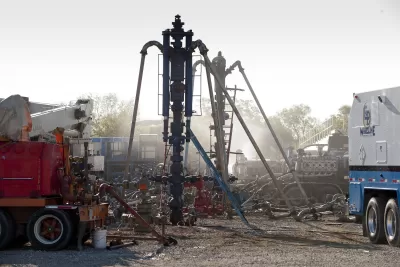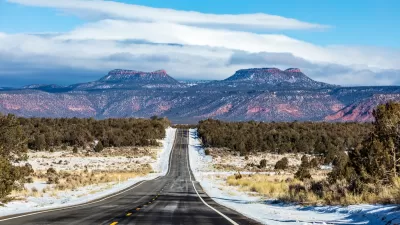Opponents of federal oversight rejoice: a ruling by U.S. District Judge Scott Skavdahl reiterates the limitations of the federal government to regulate fracking.

"A federal judge in Wyoming has struck down the Obama administration's regulations on hydraulic fracturing," reports Camila Domonoske, "ruling that the U.S. Bureau of Land Management doesn't have the authority to establish rules over fracking on federal and Indian lands."
According to Domonoske, "Skavdahl made it clear what he was — and wasn't — considering in his ruling." Here's the judge's own words, taken directly from the ruling [pdf]:
The issue before this Court is not whether hydraulic fracturing is good or bad for the environment or the citizens of the United States....The Constitutional role of this Court is to interpret the applicable statutory enactments and determine whether Congress has delegated to the Department of Interior legal authority to regulate hydraulic fracturing. It has not.
The Department of the Interior issued the regulations in March 2015, requiring "that companies drilling for oil and natural gas disclose the chemicals they use in the fracking process," among other measures, explains Domonoske.
Domonoske also explains that this week's court ruling came down to regulatory powers (or lack thereof) established by the Energy Policy Act of 2005. "As Skavdahl notes, it 'expressly and unambiguously' excludes fracking from the list of oil and gas production processes that the EPA can regulate." Thus, the power to regulate fracking falls not to federal agencies like the EPA or the Department of Interior, but rather to states. For selected passages from the court ruling, see a separate article by Jonathan H. Adler.
FULL STORY: Federal Judge Strikes Down Obama Administration's Fracking Rules

Alabama: Trump Terminates Settlements for Black Communities Harmed By Raw Sewage
Trump deemed the landmark civil rights agreement “illegal DEI and environmental justice policy.”

Study: Maui’s Plan to Convert Vacation Rentals to Long-Term Housing Could Cause Nearly $1 Billion Economic Loss
The plan would reduce visitor accommodation by 25% resulting in 1,900 jobs lost.

Why Should We Subsidize Public Transportation?
Many public transit agencies face financial stress due to rising costs, declining fare revenue, and declining subsidies. Transit advocates must provide a strong business case for increasing public transit funding.

Paris Bike Boom Leads to Steep Drop in Air Pollution
The French city’s air quality has improved dramatically in the past 20 years, coinciding with a growth in cycling.

Why Housing Costs More to Build in California Than in Texas
Hard costs like labor and materials combined with ‘soft’ costs such as permitting make building in the San Francisco Bay Area almost three times as costly as in Texas cities.

San Diego County Sees a Rise in Urban Coyotes
San Diego County experiences a rise in urban coyotes, as sightings become prevalent throughout its urban neighbourhoods and surrounding areas.
Urban Design for Planners 1: Software Tools
This six-course series explores essential urban design concepts using open source software and equips planners with the tools they need to participate fully in the urban design process.
Planning for Universal Design
Learn the tools for implementing Universal Design in planning regulations.
Smith Gee Studio
Alamo Area Metropolitan Planning Organization
City of Santa Clarita
Institute for Housing and Urban Development Studies (IHS)
City of Grandview
Harvard GSD Executive Education
Toledo-Lucas County Plan Commissions
Salt Lake City
NYU Wagner Graduate School of Public Service




























